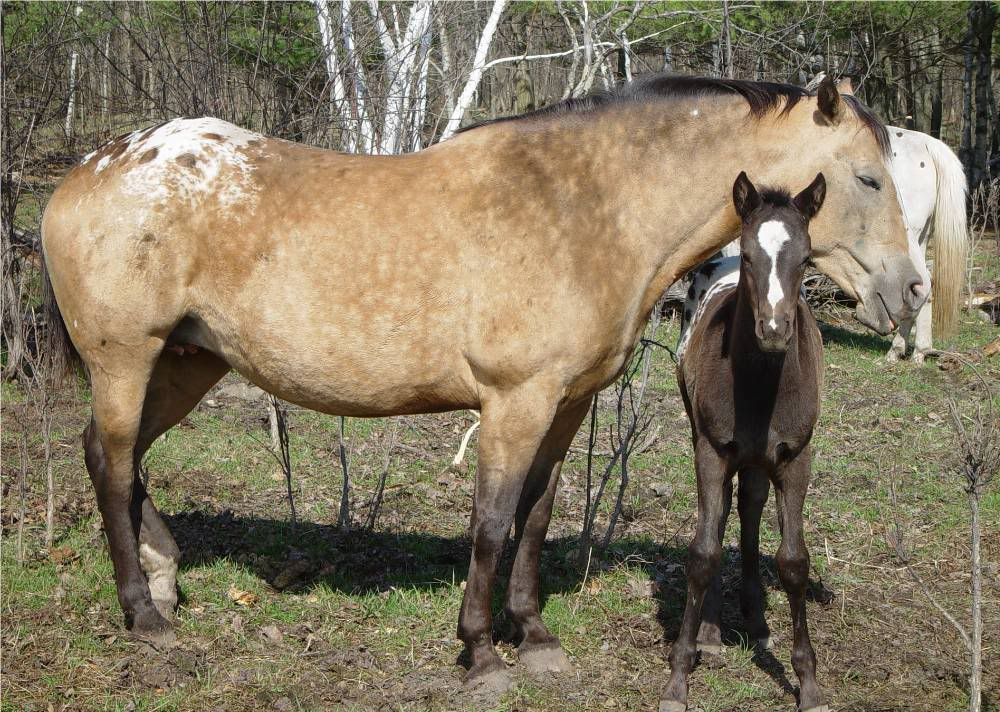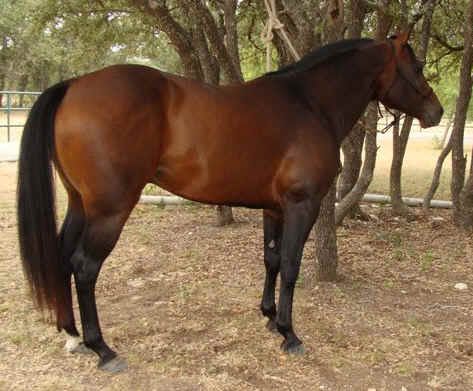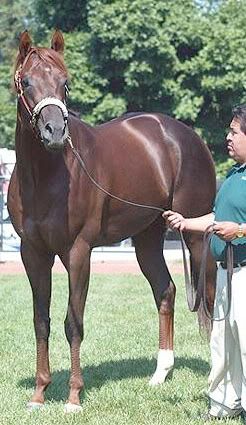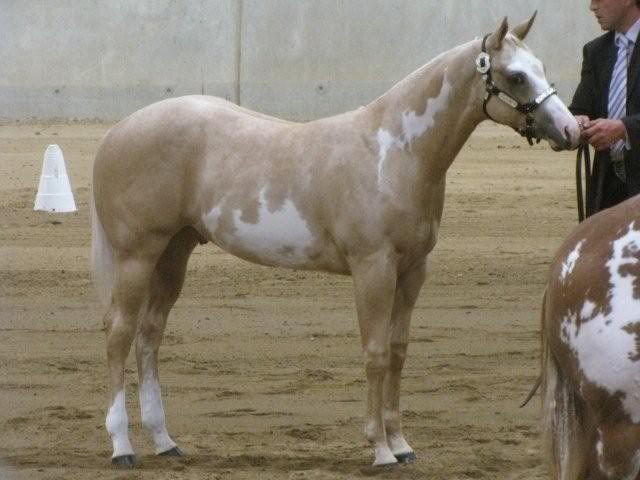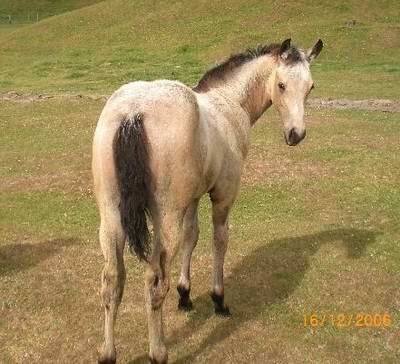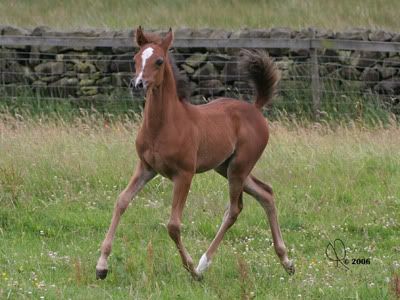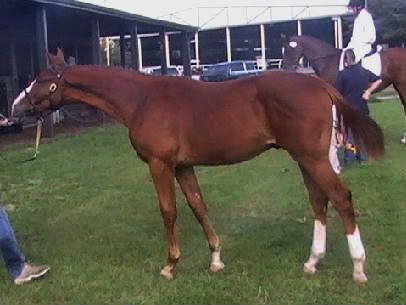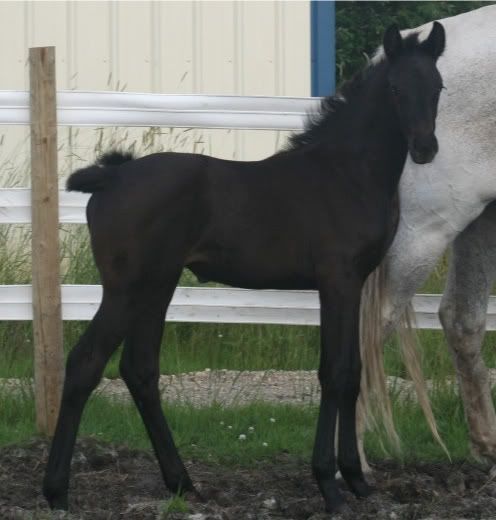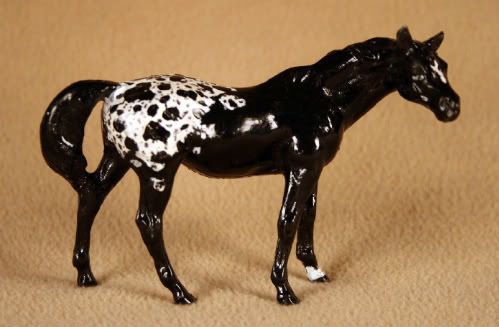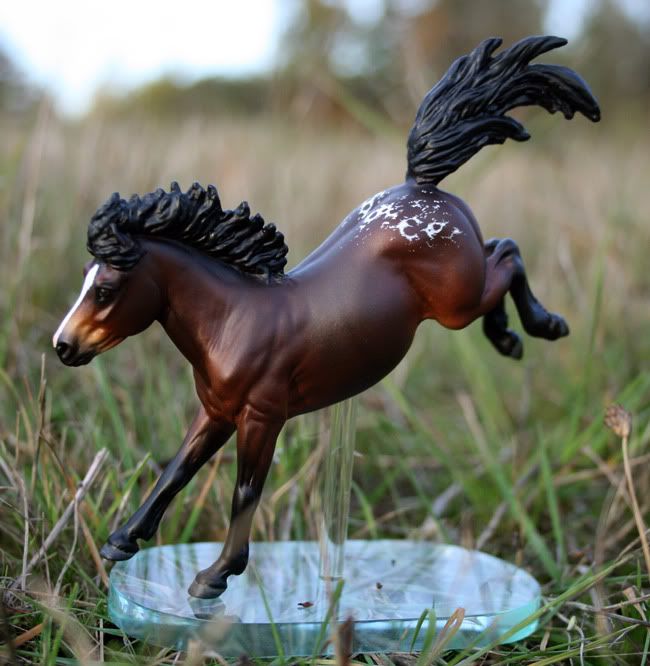Do you want to attend a show, but don't know where to find one? These are my primary resources:
NAMHSA - Member Shows
This list is all NAN-Qualifying shows. Many shows are announced before they are approved for their NAN-cards, so this list is not always the most up-to-date. By the time a show is listed on this site, it may be full.
Model Horse Blab, Fallen Leaves, The Watering Hole
All three of these are discussion boards. Showholders will often announce their upcoming shows here, but not every showholder is a member of every board.
Model Horse Gallery - Live Show Listings
Gail does a great job of keeping this list up-to-date. A great resource.
Your Region Yahoo Group
I'll link to each of these tomorrow when I cover the topic of Regions in more depth.
These are the resources I use. If I missed your favorite, please link it in the comments!
Wednesday, December 30, 2009
Tuesday, December 29, 2009
Shows Fill Up: Sign up Early!
I am the queen of procrastination. But when it comes to shows, I try to break my bad habit. I've missed out on great shows before because I didn't send in my entry in soon enough.
Big shows, small shows, medium shows: they all can sell out quickly. Most of the time, you'll be fine if you send in an entry with a couple weeks of the show. However, I recommend sending in an entry at least a month before: the sooner, the better.
Breyerfest is, by far, the most popular show in the US. The show is held in July, but it sells out around mid-March, within a couple weeks of when Breyer starts excepting entries. If you are interested in showing at Breyerfest, you need to be aware of the date entries open. On that date, send in your entry by some sort of express mail. I Fed-Ex mine. For my first Breyerfest, I sent my entry by snail mail. It made it there, but I was shower 99 out of 100.
NAN is a different ballgame. First, if your are nearing the end of the NAN qualifying year (which runs from May through April) shows will fill faster. Many showers will be trying to get last minute qualifications for their models. The closer you are geographically to the upcoming NAN, the more popular the March and April shows will be.
On the other hand, NAN takes (virtually) unlimited entries. Entries are done online during a two week period in May. Entry for NAN is a time intensive process where you must enter info for each of your individual models. I do most of the work on the last possible day and it has been a near disaster every year. Don't do that.
Big shows, small shows, medium shows: they all can sell out quickly. Most of the time, you'll be fine if you send in an entry with a couple weeks of the show. However, I recommend sending in an entry at least a month before: the sooner, the better.
Breyerfest is, by far, the most popular show in the US. The show is held in July, but it sells out around mid-March, within a couple weeks of when Breyer starts excepting entries. If you are interested in showing at Breyerfest, you need to be aware of the date entries open. On that date, send in your entry by some sort of express mail. I Fed-Ex mine. For my first Breyerfest, I sent my entry by snail mail. It made it there, but I was shower 99 out of 100.
NAN is a different ballgame. First, if your are nearing the end of the NAN qualifying year (which runs from May through April) shows will fill faster. Many showers will be trying to get last minute qualifications for their models. The closer you are geographically to the upcoming NAN, the more popular the March and April shows will be.
On the other hand, NAN takes (virtually) unlimited entries. Entries are done online during a two week period in May. Entry for NAN is a time intensive process where you must enter info for each of your individual models. I do most of the work on the last possible day and it has been a near disaster every year. Don't do that.
Monday, December 28, 2009
Dealing with Other Showers...
Sadly, sour grapes and bad sportsmanship are common at live shows. Inevitably, a shower will have what is sometimes referred to “having a plastic pony moment.” This phrase means the shower has forgotten that they are just plastic ponies and shouldn’t be taken too seriously. If it stops being fun, stop showing.
However, not every shower gets upset for baseless reasons. As I’ve mentioned ad nauseum, we don’t have a national judging standard. Every judge can decide what he or she wants to judge on. They can pick whichever horse is the shiniest or reminds them of their favorite childhood pony. Because most shows don’t write a standard into their rules, the judge is well within their rights to judge based on anything. This can be frustrating for showers, who expect a judge to follow the most common standards (discussed here, here, and here.)
Some showers also depend on model horses to make a living. It’s a difficult line of work to begin with. It gets worse when you have to rely on success in the show ring to improve sales.
Having said that, most complaints you will here are just sour grapes. Showing is a competitive sports and it comes with the territory. And inevitably, every shower just has a bad day.
The best way to deal with frustrated showers is to avoid them or tune their complaints out. Give them space; don't confront them. If they are seated close to you, take the time to walk around the room and ogle all the pretty ponies. Remember, you're surrounded by crazies that share your hobby! I met many of my closest friends at model shows.
When the complaints are focused on the judge, try to remember that all judges mean well and are trying to do the best possible job, often without reimbursement for their time. Frustrated showers will often fixate on obscure (imaginary) patterns. “This judge is only picking bay horses” or “This judge is only picking their friends horses,” etc. Realistically, these theories are never true.
Take the time to talk to the judge. Explain that you are new to showing and eager to learn about judging. Ask the judges what they are looking for, and you will discover how baseless the theories you've been hearing really are.
However, not every shower gets upset for baseless reasons. As I’ve mentioned ad nauseum, we don’t have a national judging standard. Every judge can decide what he or she wants to judge on. They can pick whichever horse is the shiniest or reminds them of their favorite childhood pony. Because most shows don’t write a standard into their rules, the judge is well within their rights to judge based on anything. This can be frustrating for showers, who expect a judge to follow the most common standards (discussed here, here, and here.)
Some showers also depend on model horses to make a living. It’s a difficult line of work to begin with. It gets worse when you have to rely on success in the show ring to improve sales.
Having said that, most complaints you will here are just sour grapes. Showing is a competitive sports and it comes with the territory. And inevitably, every shower just has a bad day.
The best way to deal with frustrated showers is to avoid them or tune their complaints out. Give them space; don't confront them. If they are seated close to you, take the time to walk around the room and ogle all the pretty ponies. Remember, you're surrounded by crazies that share your hobby! I met many of my closest friends at model shows.
When the complaints are focused on the judge, try to remember that all judges mean well and are trying to do the best possible job, often without reimbursement for their time. Frustrated showers will often fixate on obscure (imaginary) patterns. “This judge is only picking bay horses” or “This judge is only picking their friends horses,” etc. Realistically, these theories are never true.
Take the time to talk to the judge. Explain that you are new to showing and eager to learn about judging. Ask the judges what they are looking for, and you will discover how baseless the theories you've been hearing really are.
Thursday, December 24, 2009
Show Side, Off Side
Short post today in anticipation of the upcoming holiday.
Most model has a show side and an off side. When placing your horse on the table, always place him with his show side facing face the edge of the table.
If you place a model with his off side facing the judge, this will call their attention to the model but not always in a good way. If I see a model placed with his off side out, I wonder if the shower is trying to hide a mark on his show side. I will take an extra moment to investigate.
If you are confused about which side is his show side, view your model from the top. If his head leans to one side, that's his show side. If his head is straight, next check which way his mane and tail lean. Still confused? His farthest forward front leg should be on his show side. If not, check his back leg. Past that, you're fine sticking him on the table either way. He's an exception to the rule.
Most model has a show side and an off side. When placing your horse on the table, always place him with his show side facing face the edge of the table.
If you place a model with his off side facing the judge, this will call their attention to the model but not always in a good way. If I see a model placed with his off side out, I wonder if the shower is trying to hide a mark on his show side. I will take an extra moment to investigate.
If you are confused about which side is his show side, view your model from the top. If his head leans to one side, that's his show side. If his head is straight, next check which way his mane and tail lean. Still confused? His farthest forward front leg should be on his show side. If not, check his back leg. Past that, you're fine sticking him on the table either way. He's an exception to the rule.
Wednesday, December 23, 2009
What Molds Show Well: Stock
See what I did there? I'm going in order according to my typical classlist.
From this point on, I will cover mini molds separately, in their own post. It's just easier on my brain.
This division is a little different than the other because with one or two exceptions, all stock horses adhere to the same standard. A Paint or Appaloosa is just a Quarter Horse with a flashier wardrobe.
If you missed it, I recommend reading my previous post on types within the Quarter Horse breed first. The same type of splits exist in the Paint and Appaloosa breeds, such as hunter, western pleasure, gaming, roping, reining, and racing types.
The only minor difference in between the foundation types. For Paints, they basically don't exist. No one breeds "Foundation Paints" because Paints were originally registered as Quarter Horses. They weren't split into their own registry for a few decades after the founding of the AQHA and there aren't (to my knowledge) any specialty breeders for them.
Foundation Appaloosas are based on remnants of the spotted horse of the Nez Perce. I'm going to dodge completely around the long and violent history involved here and say that the early Appaloosa breeders didn't have much original stock to work with. Arabian, Thoroughbred, and Quarter were all added in to beef up the gene pool over the years to create the modern Appaloosa. Foundation breeders are seeking to preserve the oldest bloodlines and minimize in the influence of DNA introduced by these other breeds.
Usually, today's Foundation Appaloosa has a large barrel, long shoulder, thick neck, and large head. Their hips are less heavily muscled then a modern stock horse, more like the hip of a gaited horse (such as a Tennessee Walking Horse) than a stock horse:
Model-wise, this body most resembles the Breyer Indian Pony. In general, I don't recommend this mold for halter classes, but with the right assignment I've seen them be pretty successful.
Foundation Quarter Horses are based on a different body type, but the principle is the same: minimize the influence of outside bloodlines. Foundation breeders oppose the influx of Thoroughbred DNA into the AQHA gene pool after 1940--without a hint of irony. Somewhere along the way, the foundation breeders seem to have lost track of the fact that the majority of their foundation stallions were Thoroughbreds. Remember Peter McCue? Registered Thoroughbred. And Wimpy? The known parts of his portions of his pedigree--and even most of the unknowns--are all Thoroughbred.
I feel better having gotten that out of my system.
Getting back to body type, a foundation quarter horses is just a Quarter Horse. They tend be on the rougher, bulkier side, but not outside the spectrum already represented in the AQHA.
Unlike the Appaloosa, I don't see an advantage to showing any of the current Breyer or Stone molds as a foundation. Except for the old Quarter Horse Gelding, none of the molds are unrefined enough to justify this assignment.
In this division, my favorite molds are the Lady Phase, Ideal Stock Horse, and Smarty Jones.
The Lady Phase has some minor quirks in the mold. One of her eyes is bigger than the other and her hooves aren't quite even. However, in the grand scheme of Breyer, these faults are extremely minor. I prefer the new long tailed version to the original, as I find the slightly higher tail set more flattering. A high tail set on a stock horse gives the hindquarters a feeling of "squareness" (as on the real life example above.) A very low tail set can give the false of impression of a goose rump.
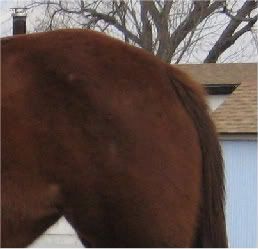
A real goose-rump
From this point on, I will cover mini molds separately, in their own post. It's just easier on my brain.
This division is a little different than the other because with one or two exceptions, all stock horses adhere to the same standard. A Paint or Appaloosa is just a Quarter Horse with a flashier wardrobe.
If you missed it, I recommend reading my previous post on types within the Quarter Horse breed first. The same type of splits exist in the Paint and Appaloosa breeds, such as hunter, western pleasure, gaming, roping, reining, and racing types.
The only minor difference in between the foundation types. For Paints, they basically don't exist. No one breeds "Foundation Paints" because Paints were originally registered as Quarter Horses. They weren't split into their own registry for a few decades after the founding of the AQHA and there aren't (to my knowledge) any specialty breeders for them.
Foundation Appaloosas are based on remnants of the spotted horse of the Nez Perce. I'm going to dodge completely around the long and violent history involved here and say that the early Appaloosa breeders didn't have much original stock to work with. Arabian, Thoroughbred, and Quarter were all added in to beef up the gene pool over the years to create the modern Appaloosa. Foundation breeders are seeking to preserve the oldest bloodlines and minimize in the influence of DNA introduced by these other breeds.
Usually, today's Foundation Appaloosa has a large barrel, long shoulder, thick neck, and large head. Their hips are less heavily muscled then a modern stock horse, more like the hip of a gaited horse (such as a Tennessee Walking Horse) than a stock horse:
Model-wise, this body most resembles the Breyer Indian Pony. In general, I don't recommend this mold for halter classes, but with the right assignment I've seen them be pretty successful.
Foundation Quarter Horses are based on a different body type, but the principle is the same: minimize the influence of outside bloodlines. Foundation breeders oppose the influx of Thoroughbred DNA into the AQHA gene pool after 1940--without a hint of irony. Somewhere along the way, the foundation breeders seem to have lost track of the fact that the majority of their foundation stallions were Thoroughbreds. Remember Peter McCue? Registered Thoroughbred. And Wimpy? The known parts of his portions of his pedigree--and even most of the unknowns--are all Thoroughbred.
I feel better having gotten that out of my system.
Getting back to body type, a foundation quarter horses is just a Quarter Horse. They tend be on the rougher, bulkier side, but not outside the spectrum already represented in the AQHA.
Unlike the Appaloosa, I don't see an advantage to showing any of the current Breyer or Stone molds as a foundation. Except for the old Quarter Horse Gelding, none of the molds are unrefined enough to justify this assignment.
In this division, my favorite molds are the Lady Phase, Ideal Stock Horse, and Smarty Jones.
The Lady Phase has some minor quirks in the mold. One of her eyes is bigger than the other and her hooves aren't quite even. However, in the grand scheme of Breyer, these faults are extremely minor. I prefer the new long tailed version to the original, as I find the slightly higher tail set more flattering. A high tail set on a stock horse gives the hindquarters a feeling of "squareness" (as on the real life example above.) A very low tail set can give the false of impression of a goose rump.

A real goose-rump
A slight goose rump can be advantageous for some disciplines, but is a handicap in others.
The Ideal Stock Horse and the RRQH it's based on is an extremely popular mold. The musculature is very realistic, his proportions are great and his flaws are few. I have a few nitpicky problems with this mold, but they are mostly production related. He's a little downhill, but some of the different mane styles of this mold cover this better than others. When buying an ISH as a show horse, always set him on a table and look at him from the front. Some ISHs are "base narrow" meaning their hooves are too close together. This isn't the original mold, but the result of minor warping in the plastic. His off side nostril isn't always prepped correctly and should always be carved out on a custom.
I like the Smarty...probably a little too much. I have a large conga line of them in my own collection and show them frequently. Because of this extreme position, every muscle in the sculpture is tense. This gives him the impression of being bulkier than he really is. If he were standing still I think he would look more like this:
However, I like seeing him in stock classes because he makes a great racing bred or high percentage TB stock horse. My only fussy issues are his small ears and slight discrepancies in the lengths of his legs bones (they're off--just a little.)
These three molds are interchangeable between all stock classes except mustang. While I know people show them this way, an ISH or Lady Phase is not a mustang. These molds are so easily recognizable as QHs/Paints/Appaloosas that I don't buy them as mustangs or another breed type. Mustangs have some characteristics in common with the stock breeds and their type varies widely. However, I've never seen a mustang with that much muscle. If you encounter a mustang that looks like the bay in this post, please forward me pics. I wanna see.
Silver is the most popular mold in the mustang class. He reminds me of a ferret.
If I left out your favorite mold, please let me know in the comments and I will gladly tell you why. ;)
The Ideal Stock Horse and the RRQH it's based on is an extremely popular mold. The musculature is very realistic, his proportions are great and his flaws are few. I have a few nitpicky problems with this mold, but they are mostly production related. He's a little downhill, but some of the different mane styles of this mold cover this better than others. When buying an ISH as a show horse, always set him on a table and look at him from the front. Some ISHs are "base narrow" meaning their hooves are too close together. This isn't the original mold, but the result of minor warping in the plastic. His off side nostril isn't always prepped correctly and should always be carved out on a custom.
I like the Smarty...probably a little too much. I have a large conga line of them in my own collection and show them frequently. Because of this extreme position, every muscle in the sculpture is tense. This gives him the impression of being bulkier than he really is. If he were standing still I think he would look more like this:
However, I like seeing him in stock classes because he makes a great racing bred or high percentage TB stock horse. My only fussy issues are his small ears and slight discrepancies in the lengths of his legs bones (they're off--just a little.)
These three molds are interchangeable between all stock classes except mustang. While I know people show them this way, an ISH or Lady Phase is not a mustang. These molds are so easily recognizable as QHs/Paints/Appaloosas that I don't buy them as mustangs or another breed type. Mustangs have some characteristics in common with the stock breeds and their type varies widely. However, I've never seen a mustang with that much muscle. If you encounter a mustang that looks like the bay in this post, please forward me pics. I wanna see.
Silver is the most popular mold in the mustang class. He reminds me of a ferret.
If I left out your favorite mold, please let me know in the comments and I will gladly tell you why. ;)
Labels:
breed class,
breed groups,
buying,
classlist,
conformation,
halter
Tuesday, December 22, 2009
What Molds Show Well: Foals
I'm starting a new series based on the question I get asked the most often: Which molds show well and what should I buy?
During this series I will present the molds I've seen be successful in the show ring. However, I can't repeat this mantra often enough: Collect what you love, show what you collect. If you don't like the Proud Arabian Mare, no number of ribbons will ever make you love that mold anymore. Having said that, it is helpful (especially to those of you with large and varied collections) to know which of your models to bring with and which to leave home.
These mold suggestions will apply both to original finish models and simple customs. Moderate and drastic customs are often altered to the degree that their flaws have often been eliminated.
I've split this series into breed groups with the intention to go class by class, following the typical classlist I outlined previously. I'm breaking it down this way because successful molds are predicated on the class they show in. There are some molds that are fine by themselves, but they may not win often at a show because there are better molds that they must compete against. On the flip side, there are molds that only show well because the competition in their class is so scarce.
Stock Foals
In a stock foal class, the Peter Stone Weanling reigns supreme. She was cast from the original resin Parrs Dream Doll by Carol Williams, also a very popular mold. There is very little to nitpick on this mold and she is a wonderful accomplishment by the sculptor.
If Breyers and Stones are shown together in OF or custom, the weanling is your best bet. However, they are split out or you are showing at a Breyer only show, you may consider the classic Mustang Foal, who is making a resurgence in popularity. The G2 foals (including the Running, Scrambling, and Scratching Foals) dominate this class in the mini division and can also hold their own when shown against traditional.
As with the stock division, I highly recommend Stone's option, the Arabian Yearling, over anything Breyer produces. For Breyer only, you can consider the Saddlebred Weanling, who has both his fans and detractors. The classic Arabian Foal, like his mustang counterpart, has come back in fashion with the increased popularity of Maureen Love's work. The Trotting Foal is also popular in both mini and combined divisions.
The twin foals, Amber and Ashley, show best in this division when shown as Morgans or a similar medium body breed. I've seen them have some success as stock foals, but--in my mind--they don't show any of the type I want to see in a stock foal at this age. Honestly, I don't really care for either of them as show models (I own a few and don't show them), but I that's not a hobby wide opinion.
Sport Foals
At the moment, this class is a crap shoot. I've seeing showers win with any of the breed I listed above for Light and Stock with odd breed assignments. Some are creative and make sense, but others are hard to believe.
I've seen a lot PS Weanlings shown as sport horses (often sport crosses, warmbloods, and even Thoroughbreds). I hate this assignment, but it's common and may win this class because of limited competition.
My favorites for this class are, again, the Running, Scrambling, and Scratching Foals. I think of them as the Rorschach test of model horses: whatever breed you see them as probably says more about you than the foals. They weren't sculpted to depict particular breeds (to my knowledge), plus their drastic movements and scale obscure any hints of type.
Outside of the minis, the new classic Warmblood foal is my favorite. His type his very obvious to me, although his conformation isn't completely perfect. But I'm mostly biding my time until Breyer releases Galen in plastic.
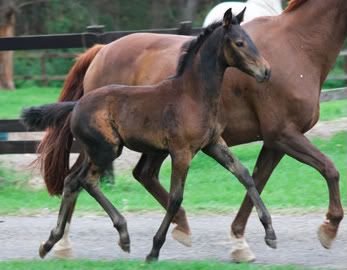
Sport foals are easiest to identify by their action
The most popular molds in this division are any of the above shown as one of the "near horse" breeds. By "near horse", I mean breeds that are short versions of standard horses such as the Quarter Pony, the POA, the Paint Pony. You can also through breeds like the Connemara, which has a high percentage of thoroughbred mixed in, to this category.
As in the Stock Foals class, the Weanling and Rorschach foals are very popular.
During this series I will present the molds I've seen be successful in the show ring. However, I can't repeat this mantra often enough: Collect what you love, show what you collect. If you don't like the Proud Arabian Mare, no number of ribbons will ever make you love that mold anymore. Having said that, it is helpful (especially to those of you with large and varied collections) to know which of your models to bring with and which to leave home.
These mold suggestions will apply both to original finish models and simple customs. Moderate and drastic customs are often altered to the degree that their flaws have often been eliminated.
I've split this series into breed groups with the intention to go class by class, following the typical classlist I outlined previously. I'm breaking it down this way because successful molds are predicated on the class they show in. There are some molds that are fine by themselves, but they may not win often at a show because there are better molds that they must compete against. On the flip side, there are molds that only show well because the competition in their class is so scarce.
Stock Foals
In a stock foal class, the Peter Stone Weanling reigns supreme. She was cast from the original resin Parrs Dream Doll by Carol Williams, also a very popular mold. There is very little to nitpick on this mold and she is a wonderful accomplishment by the sculptor.
If Breyers and Stones are shown together in OF or custom, the weanling is your best bet. However, they are split out or you are showing at a Breyer only show, you may consider the classic Mustang Foal, who is making a resurgence in popularity. The G2 foals (including the Running, Scrambling, and Scratching Foals) dominate this class in the mini division and can also hold their own when shown against traditional.
As with the stock division, I highly recommend Stone's option, the Arabian Yearling, over anything Breyer produces. For Breyer only, you can consider the Saddlebred Weanling, who has both his fans and detractors. The classic Arabian Foal, like his mustang counterpart, has come back in fashion with the increased popularity of Maureen Love's work. The Trotting Foal is also popular in both mini and combined divisions.
The twin foals, Amber and Ashley, show best in this division when shown as Morgans or a similar medium body breed. I've seen them have some success as stock foals, but--in my mind--they don't show any of the type I want to see in a stock foal at this age. Honestly, I don't really care for either of them as show models (I own a few and don't show them), but I that's not a hobby wide opinion.
Sport Foals
At the moment, this class is a crap shoot. I've seeing showers win with any of the breed I listed above for Light and Stock with odd breed assignments. Some are creative and make sense, but others are hard to believe.
I've seen a lot PS Weanlings shown as sport horses (often sport crosses, warmbloods, and even Thoroughbreds). I hate this assignment, but it's common and may win this class because of limited competition.
What is ideal in a Sport foal is often a fault in a Stock horse (and vice versa)
My favorites for this class are, again, the Running, Scrambling, and Scratching Foals. I think of them as the Rorschach test of model horses: whatever breed you see them as probably says more about you than the foals. They weren't sculpted to depict particular breeds (to my knowledge), plus their drastic movements and scale obscure any hints of type.
Outside of the minis, the new classic Warmblood foal is my favorite. His type his very obvious to me, although his conformation isn't completely perfect. But I'm mostly biding my time until Breyer releases Galen in plastic.

Sport foals are easiest to identify by their action
Draft Foals
The Clydesdale foal.
...you wanted more? No one remembers the last time this class was won by anything else. It's not as much as testament to the mold's quality (his legs are way too short) but to the lack of competition.
...you wanted more? No one remembers the last time this class was won by anything else. It's not as much as testament to the mold's quality (his legs are way too short) but to the lack of competition.
Pony Foals
The most popular molds in this division are any of the above shown as one of the "near horse" breeds. By "near horse", I mean breeds that are short versions of standard horses such as the Quarter Pony, the POA, the Paint Pony. You can also through breeds like the Connemara, which has a high percentage of thoroughbred mixed in, to this category.
As in the Stock Foals class, the Weanling and Rorschach foals are very popular.
Labels:
breed class,
breed groups,
buying,
classlist,
conformation,
halter
Monday, December 21, 2009
A Typical Breed Classlist
I could have sworn I covered this topic before. I remember writing a post, but I can't find it in the archives. So if this is a repeat, I apologize.
There used to be such a thing as the minimum guaranteed/core classlist. The be able give out NAN cards, a show must be approved by NAMHSA. Once upon a time (all of two years ago) a show had to offer a minimum list of a classes to be qualified. The show could expand the list and offer more classes, but it could never offer less. This rule was removed, but many shows are still based on the basic list.
The typical classlist you will see today will have more classes than were on the core classlist. For instance, the list only required one Draft class and one Pony class. Speaking as someone who has shows several draft and many more ponies, this sucked. In recent years, these classes have expanded to their own divisions with multiple classes each. There is also a very recent trend toward more Spanish classes with the success of new Spanish mold from Breyer.
The following is an example of a typical classlist:
Stock Foals
Light/Gaited Foals
Sport Foals
Draft/Pony Foals
Other Pure/Part Foals
Foal Breeds Championship
Quarter Horse
Paint
Appaloosa
Mustang
Other Pure/Part Stock
Stock Breeds Championship
Welsh Ponies
Other British Ponies
European Ponies
American Ponies
Other Pure/Part Ponies
Pony Breeds Championship
British Draft
European Draft
American Draft
Other Pure/Part Draft
Draft Breeds Championship
Thoroughbred/Standardbred
European Warmblood
American Warmblood
Carriage
Other Pure/Part Sport
Sport Breeds Championship
Arabian Stallion
Arabian Mare & Gelding
Part Arabian/National Show Horse
Morgan
American Saddlebred
American Gaited
Other Light/Gaited Pure/Part
Light/Gaited Breeds Championship
Andalusian/Lusitano
Spanish Gaited
Other Spanish Pure/Part
Spanish Breeds Championship
Mules
Donkeys
Exotics
Other Pure Breeds
Other Part Breeds
Other Breeds Championship
Classes can be split out from the current list. Usually the bigger the show or more popular division, the more split out the classes will be.
There used to be such a thing as the minimum guaranteed/core classlist. The be able give out NAN cards, a show must be approved by NAMHSA. Once upon a time (all of two years ago) a show had to offer a minimum list of a classes to be qualified. The show could expand the list and offer more classes, but it could never offer less. This rule was removed, but many shows are still based on the basic list.
The typical classlist you will see today will have more classes than were on the core classlist. For instance, the list only required one Draft class and one Pony class. Speaking as someone who has shows several draft and many more ponies, this sucked. In recent years, these classes have expanded to their own divisions with multiple classes each. There is also a very recent trend toward more Spanish classes with the success of new Spanish mold from Breyer.
The following is an example of a typical classlist:
Stock Foals
Light/Gaited Foals
Sport Foals
Draft/Pony Foals
Other Pure/Part Foals
Foal Breeds Championship
Quarter Horse
Paint
Appaloosa
Mustang
Other Pure/Part Stock
Stock Breeds Championship
Welsh Ponies
Other British Ponies
European Ponies
American Ponies
Other Pure/Part Ponies
Pony Breeds Championship
British Draft
European Draft
American Draft
Other Pure/Part Draft
Draft Breeds Championship
Thoroughbred/Standardbred
European Warmblood
American Warmblood
Carriage
Other Pure/Part Sport
Sport Breeds Championship
Arabian Stallion
Arabian Mare & Gelding
Part Arabian/National Show Horse
Morgan
American Saddlebred
American Gaited
Other Light/Gaited Pure/Part
Light/Gaited Breeds Championship
Andalusian/Lusitano
Spanish Gaited
Other Spanish Pure/Part
Spanish Breeds Championship
Mules
Donkeys
Exotics
Other Pure Breeds
Other Part Breeds
Other Breeds Championship
Classes can be split out from the current list. Usually the bigger the show or more popular division, the more split out the classes will be.
Friday, December 18, 2009
Basic Dressage: Pt. 2
Bonus Friday post to make up for my disappearing act! You can read part one of this article here.
Objectives of the FEI levels of competition
These tests are used worldwide.
PRIX ST. GEORGES: Test of medium standard. This test represents the medium stage of training. It comprises exercises to show the horse’s submission to all the demands of the execution of classical equitation and a standard of physical and mental balance and development, which will enable him to carry them out with harmony, lightness and ease.
(Depeche-resin, Caprice-resin)
INTERMEDIATE I: Test of relatively advanced standard. The object of this test is to lead horses on, progressively and without harm to their organism, from the correct execution of Prix St. Georges to the more demanding exercises of Intermediate II.
(Balling WB mare-resin)
INTERMEDIATE II: Test of advanced standard. The object of this test is to prepare the horses for the Grand Prix.
(Keltic Salinero, Stone half passing WB)
GRAND PRIX: Test of the highest standard. The Grand Prix is a competition of the highest level, which brings out the horse’s perfect lightness, characterized by the total absence of resistance and the complete development of impulsion. The test includes all the school paces and all the fundamental airs of the Classical High School, of which the artificial paces, based on an extreme extension of the forelegs, are no part. For this reason, the school leaps, no longer practiced in a great many countries, do not figure in the test.
(Deputed Duke, Lohengren, Kinetic Potential, Keltic Salinero)
There is also a Dressage test with jumps called Prix Caprilli, I would be happy to provide this test for anyone interested in another place to show your jumper.
Within these levels are a series of tests, the dressage tests can be found here and here.
When entering a model in a Dressage class it is important to list the level and the test that it is being shown, tests are also good ways to know what letter your horse should be moving past on the rail.
Please remember that Dressage, like model showing is a subjective sport with a set of judging guidelines, so any opinions are strictly that, I do have experience with my own real horses and I have trained from training level through Prix St George and am currently showing my new horse second level, with plans to move to third next year.
Laura back in: If you have any questions about this topic you would like to ask, please post them in the comments and I’ll ask Cassie to come answers them.
Objectives of the FEI levels of competition
These tests are used worldwide.
PRIX ST. GEORGES: Test of medium standard. This test represents the medium stage of training. It comprises exercises to show the horse’s submission to all the demands of the execution of classical equitation and a standard of physical and mental balance and development, which will enable him to carry them out with harmony, lightness and ease.
(Depeche-resin, Caprice-resin)
INTERMEDIATE I: Test of relatively advanced standard. The object of this test is to lead horses on, progressively and without harm to their organism, from the correct execution of Prix St. Georges to the more demanding exercises of Intermediate II.
(Balling WB mare-resin)
INTERMEDIATE II: Test of advanced standard. The object of this test is to prepare the horses for the Grand Prix.
(Keltic Salinero, Stone half passing WB)
GRAND PRIX: Test of the highest standard. The Grand Prix is a competition of the highest level, which brings out the horse’s perfect lightness, characterized by the total absence of resistance and the complete development of impulsion. The test includes all the school paces and all the fundamental airs of the Classical High School, of which the artificial paces, based on an extreme extension of the forelegs, are no part. For this reason, the school leaps, no longer practiced in a great many countries, do not figure in the test.
(Deputed Duke, Lohengren, Kinetic Potential, Keltic Salinero)
There is also a Dressage test with jumps called Prix Caprilli, I would be happy to provide this test for anyone interested in another place to show your jumper.
Within these levels are a series of tests, the dressage tests can be found here and here.
When entering a model in a Dressage class it is important to list the level and the test that it is being shown, tests are also good ways to know what letter your horse should be moving past on the rail.
Please remember that Dressage, like model showing is a subjective sport with a set of judging guidelines, so any opinions are strictly that, I do have experience with my own real horses and I have trained from training level through Prix St George and am currently showing my new horse second level, with plans to move to third next year.
Laura back in: If you have any questions about this topic you would like to ask, please post them in the comments and I’ll ask Cassie to come answers them.
Thursday, December 17, 2009
The Hobby Police
This is a topic near and dear to my heart. As far as the hobby goes, I have two primary goals for myself: try improve my work and encourage/teach newbie hobbyists & artists. The self-appointed Hobby Police don't acknowledge the former and work in direct opposition to the latter.
Let's start from the beginning, shall we?
This is--no joke--my first custom. The blanket is white out and sharpie over enamel model paint. Sadly, this probably marked a high point in my first few years of my customizing career. Quality took a steep drop off as I discovered hairing, airbrushing, oils, and attempted to tackled any color that wasn't black. You should have seen how I created "roan" at the age of 13--and yes, I even tried to hawk it on eBay.
I have very little formal training past "coloring in the lines," so my current skill set is the result of years of trial and error. And in this hobby, you go through a lot of error. However, no amount of public humiliation was necessary to get me from this first attempt to my latest:
Honestly, I was a sensitive and emotionally unstable teen. Harsh criticism would have driven me to quit--without question. I was lucky that I started customizing in an era where the internet was new and access to the hobby came primarily through the Model Horse Gallery and MH$P. If I was getting a public dressing down on the Haynet, I never saw it. I never discovered a thread like this aimed at my work. Or this. Or this, or this...you get the idea. (Apologies to those of you that cannot see the above links as these threads are in a paid-only section. In fact, I've been unable to dig up a single fully public example of the Hobby Police in action.)
I don't intend to single out Blab or blabbers here, it just happens to be the community I know best. This behavior is hobby wide. There are lists devoted entirely to this purpose, although most are private. You'll see these kind of comments in blogs, other boards, and in person.
The Hobby Police follow a distinct pattern:
1. Find a target. This is most often an auction on a site like eBay or an ad on MH$P. In person, it will be an unattended model on a table.
2. Post a link with commentary. Sometimes the comments are constructive (the head is out of scale, the pattern in unrealistic, etc.) but most are mockery ("a rather unfortunate paint job," "Excuse me while I choke on my tea," or "Nice neck [sarcasm.]")
3. Defend their comments as "helping" the artist, who otherwise would not improve on their own. Example from one of the linked threads:
Some already have.
There is no litmus test for artists. Newbies and BNAs alike, the quality of their work has no correlation to their personality.
Most of the discussion in the linked threads aren't pointed constructive criticism. It's a game. The authors don't write gently worded emails to the artist suggesting how they could improve their work or sales practices. They don't write because they know the response they receive will likely be curt and unwelcome. And that's not nearly as fun as mockery.
Artists, take heart! This kind of unwanted attack isn't about you. Never was. The point of the game is earn the respect of their peers by pointing out the supposed failings of others. They write this stuff because they want to feel like they are above the artist they attack. They are looking for positive feedback from their fellow hobbyists that their opinions of a particular model are valid, feedback they fear they won't get in direct communication with the artist.
The same goes when they attack the owners of custom work they don't like. Really, it's high school all over again. They want to be seen as the head cheerleader with the best taste in clothes.
The same behavior you see online will manifest itself in a different form at live shows. Personally, I believe a live show can be the greatest teaching tool for a hobbyist, but snark isn't helpful.
Next week, I will touch back on this topic as it applies to live showing. This portion of the hobby can be a shock for new showers (I know it was for me) but it doesn't have to sully your experience. There are techniques for dealing with them without ruining the fun of showing.
Let's start from the beginning, shall we?
This is--no joke--my first custom. The blanket is white out and sharpie over enamel model paint. Sadly, this probably marked a high point in my first few years of my customizing career. Quality took a steep drop off as I discovered hairing, airbrushing, oils, and attempted to tackled any color that wasn't black. You should have seen how I created "roan" at the age of 13--and yes, I even tried to hawk it on eBay.
I have very little formal training past "coloring in the lines," so my current skill set is the result of years of trial and error. And in this hobby, you go through a lot of error. However, no amount of public humiliation was necessary to get me from this first attempt to my latest:
Honestly, I was a sensitive and emotionally unstable teen. Harsh criticism would have driven me to quit--without question. I was lucky that I started customizing in an era where the internet was new and access to the hobby came primarily through the Model Horse Gallery and MH$P. If I was getting a public dressing down on the Haynet, I never saw it. I never discovered a thread like this aimed at my work. Or this. Or this, or this...you get the idea. (Apologies to those of you that cannot see the above links as these threads are in a paid-only section. In fact, I've been unable to dig up a single fully public example of the Hobby Police in action.)
I don't intend to single out Blab or blabbers here, it just happens to be the community I know best. This behavior is hobby wide. There are lists devoted entirely to this purpose, although most are private. You'll see these kind of comments in blogs, other boards, and in person.
The Hobby Police follow a distinct pattern:
1. Find a target. This is most often an auction on a site like eBay or an ad on MH$P. In person, it will be an unattended model on a table.
2. Post a link with commentary. Sometimes the comments are constructive (the head is out of scale, the pattern in unrealistic, etc.) but most are mockery ("a rather unfortunate paint job," "Excuse me while I choke on my tea," or "Nice neck [sarcasm.]")
3. Defend their comments as "helping" the artist, who otherwise would not improve on their own. Example from one of the linked threads:
"You need to know when the time is right to put your work out for the public eye to scrutinize. This seller obviously doesn't know when that time is. I hope they keep painting and progressing and sooner or later they're going to look back and these pieces and say 'what the heck was I thinking when I put THAT on evilbay?'."The justification is that if they don't point out and "critique" young artists, those artists will never improve. Some critics will attack Big Name Artists (BNA's) as well, comfortable in the thought that they are contributing to the hobby by taking the artist's ego down a peg. The flaw in the logic here is that every artist I've met in the hobby, every--last--one, constantly struggles to improve. Most are easy going and down to earth people. Many (even BNAs) are very sensitive to criticism. These artists would leave a gaping hole in the hobby if they left.
Some already have.
There is no litmus test for artists. Newbies and BNAs alike, the quality of their work has no correlation to their personality.
Most of the discussion in the linked threads aren't pointed constructive criticism. It's a game. The authors don't write gently worded emails to the artist suggesting how they could improve their work or sales practices. They don't write because they know the response they receive will likely be curt and unwelcome. And that's not nearly as fun as mockery.
Artists, take heart! This kind of unwanted attack isn't about you. Never was. The point of the game is earn the respect of their peers by pointing out the supposed failings of others. They write this stuff because they want to feel like they are above the artist they attack. They are looking for positive feedback from their fellow hobbyists that their opinions of a particular model are valid, feedback they fear they won't get in direct communication with the artist.
The same goes when they attack the owners of custom work they don't like. Really, it's high school all over again. They want to be seen as the head cheerleader with the best taste in clothes.
The same behavior you see online will manifest itself in a different form at live shows. Personally, I believe a live show can be the greatest teaching tool for a hobbyist, but snark isn't helpful.
Next week, I will touch back on this topic as it applies to live showing. This portion of the hobby can be a shock for new showers (I know it was for me) but it doesn't have to sully your experience. There are techniques for dealing with them without ruining the fun of showing.
Labels:
about me,
custom,
dealing with...,
editorial,
workmanship
Posting Recommences
I didn't fall off the face of the earth. I didn't forget the URL of this blog. I didn't lose interest and abandon the project.
After recovering from the flu, I was just busy. Unfortunately, blogging the thing that had to fall off the edge of my schedule. However, my New Year's resolution is to get a better handle on my time and not fall off the face of the earth (blog-wise) again.
The long await part 2 of my previous will follow tomorrow (it's sitting at home on my Macbook--and I'm not.) I'm going to spend today getting to know the "schedule posts" feature of Blogger and get to a few topics I've been saving.
After recovering from the flu, I was just busy. Unfortunately, blogging the thing that had to fall off the edge of my schedule. However, my New Year's resolution is to get a better handle on my time and not fall off the face of the earth (blog-wise) again.
The long await part 2 of my previous will follow tomorrow (it's sitting at home on my Macbook--and I'm not.) I'm going to spend today getting to know the "schedule posts" feature of Blogger and get to a few topics I've been saving.
Subscribe to:
Comments (Atom)


